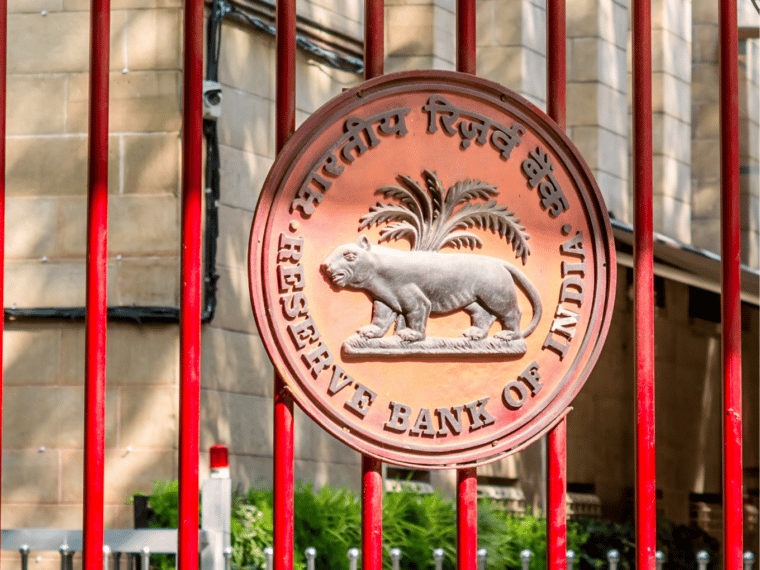
Last week, the RBI increased the risk weightage for outstanding as well as new unsecured consumer credit exposure of commercial banks and NBFCs by 25 percentage points
The decision was prompted by the high growth in unsecured consumer credit and the increasing dependency of NBFCs on bank borrowings
The new rules are expected to push up the cost of capital for fintechs and may impact digital lending platforms, including Paytm
In a bid to check the unbridled growth in unsecured consumer lending, the Reserve Bank of India (RBI) last week came out with a notification increasing the risk weight for consumer credit exposure of banks and non-banking financial companies (NBFCs).
The central bank increased the risk weightage for outstanding as well as new unsecured consumer credit exposure of commercial banks as well as NBFCs by 25 percentage points to 125% from 100% earlier.
In simple terms, the move will push up the lending costs for unsecured consumer loans.
As per global standards, at 100% risk weightage, INR 92 out of every INR 100 loan given by a bank comes from the depositors’ money while INR 8 comes from shareholders’ investment. With the 25 percentage points increase, the banks will now have to take INR 10 from shareholders’ investment. The same will be the case for NBFCs as well.
The new rules are expected to impact companies such as Paytm, CRED, Navi Finserv, OnEMi Technologies (which runs Kissht and RING).
Commenting on the central bank’s move, Credgenics cofounder and CEO Rishabh Goel said, “The current increase of risk weight assessment is likely to result in a marginal uptick in loan pricing by banks. This serves as a signal urging lenders to exercise caution, particularly in the small-ticket loans segment.”
Priyanka Chopra, COO and managing partner for seed investing at IIMA-CIIE, said that the move would result in moderation of unsecured credit for digital lending startups. However, established players with a solid capital base and calibrated underwriting are likely to experience minimal impact.
The RBI’s move was guided by the need to control the growth in unsecured loans. Last month, RBI governor Shaktikanta Das flagged the high growth in certain components of consumer credit and advised banks and NBFCs to strengthen their internal surveillance mechanisms, address the build-up of risks, and institute suitable safeguards. He also highlighted the increasing dependency of NBFCs on bank borrowings.
Besides the aforementioned points, the RBI, in its notification, also made changes to the risk weight of credit card receivables of scheduled commercial banks and bank credit to NBFCs as it looks to address potential risk build up. The central bank also said that all top-up loans extended by regulated entities against movable assets which are inherently depreciating in nature, such as vehicles, will have to be treated as unsecured loans for credit appraisal, prudential limits and exposure purposes.
NBFCs, Fintechs To Get Back To Drawing Board
A large number of fintech startups in the country have forayed into digital lending to shore up their revenue and bottom lines. The fintechs lend money either through the NBFCs owned by them or through partnerships with other NBFCs.
Explaining the impact of the new rules, Chopra said that it would push up the cost of capital for the NBFCs. While they will have to allocate extra capital for unsecured lending owing to the impact of the new rules on their capital adequacy ratios, the banks that lend to NBFCs will also need to earmark additional capital.
The increased risk weight serves as a strategic opportunity for fintechs to reassess their approach to loan disbursement and recovery, as per market experts. The new measures will encourage a more careful evaluation of lending practices and emphasise the importance of risk management and responsible lending.
“As the lending industry navigates these changes, it is crucial for players to adapt and re-evaluate their strategies. This move by the RBI is expected to contribute to the long-term health and sustainability of the sector. It underscores the need for lenders to strike a balance between meeting credit demand and ensuring the resilience of their lending practices,” said Sameer Aggarwal, CEO and founder at Revfin.
According to brokerage BofA, the RBI’s new rules will impact the growth of Paytm’s personal loans segment and its take rates.
BofA said that as per Paytm’s Q2 financials, 56% of its loan value came from the BNPL segment, 20% from merchant loans, and 24% from personal loans. However, the brokerage does not expect the RBI norms to impact the first two loan segments.
Troubles Of Digital Lending Platforms
The central bank’s latest move is part of its efforts to better regulate digital lending platforms.
In June last year, the RBI’s notification saying non-bank fintech players cannot load prepaid payment instruments (PPIs) with credit lines hit the fintech ecosystem hard. The move resulted in many companies such as slice, One Card, Jupiter and Kreditbee changing their business models to comply with the new regulations.
Soon after, the central bank’s digital lending guidelines came into effect in December 2022 following a number of complaints against illegal platforms. This resulted in several fintechs applying for NBFC licence to become a regulated entity in order to continue their digital lending operations.
Earlier this year, the Ministry of Electronics and Information Technology also banned 94 digital lending apps for their alleged connections with China. However, the ministry later withdrew the ban on some of these apps.
Digital lending apps also came under scrutiny for their shady recovery tactics and increasing customer complaints.
Digital lending in India is expected to become a $1.3 Tn market opportunity by 2030. In essence, the total digital lending market is set to increase by almost 5X, driven by favourable socio-economic factors. Overall, the fintech sector currently has 33 soonicorns, of which 39% are from the digital lending segment. The digital lending segment also counts two unicorns – Yubi (formerly CredAvenue) and Oxyzo.
































 Ad-lite browsing experience
Ad-lite browsing experience